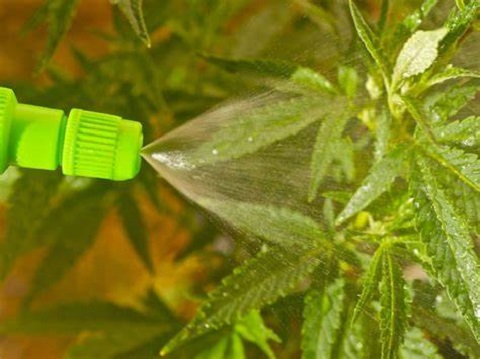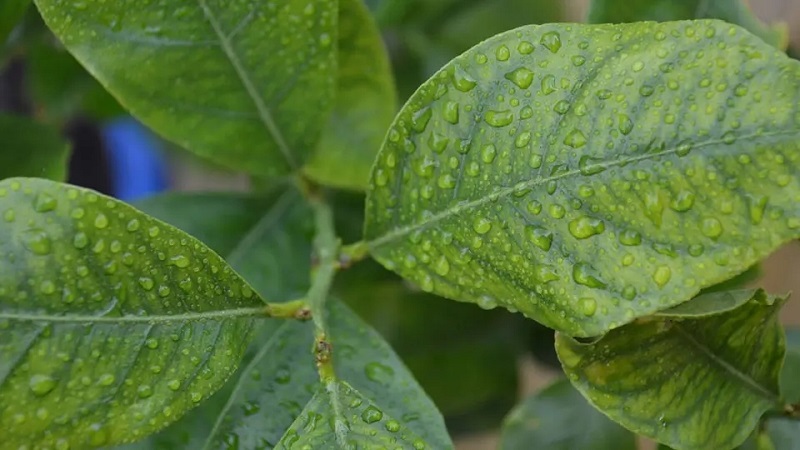
Exhibition time: 17-19 March, 2026 Shanghai, China
 中文
中文

Exhibition time: 17-19 March, 2026 Shanghai, China
 中文
中文

Takeaway: Many growers believe that foliar feeding is favorable over soil application and it is associated with higher yields and better fruit quality. However, much uncertainty still surrounds this practice. To foliar feed or not to foliar feed? We have the answer!
Foliar feeding is the practice of supplying nutrients to plants through their foliage. It involves spraying water-dissolved fertilizers directly on the leaves.
Many growers believe that foliar feeding is favorable over soil application and it is associated with higher yields and better fruit quality. However, much uncertainty still surrounds this practice.

Under Which Conditions Should You Use Foliar Feeding?
Under certain conditions, foliar feeding has the advantage over soil applications.
Limiting Conditions: A foliar feeding is recommended when environmental conditions limit the uptake of nutrients by roots. Such conditions may include high or low soil pH, temperature stress, too low or too high soil moisture, root disease, presence of pests that affect nutrient uptake, nutrient imbalances in soil, etc.
For example, micronutrient availability is greatly reduced in high soil pH. Under such conditions, foliar application of micronutrients might be the more efficient way to supply micronutrients to the plant.
Nutrient deficiency symptoms: One of the advantages of foliar feeding is the quick response of the plant to the nutrient application.
The efficiency of nutrient uptake is considered to be 8 to 9 folds higher when nutrients are applied to the leaves compared with applying nutrients to soil.
Therefore, when a deficiency symptom shows up, a quick but temporary fix would be applying the deficient nutrient through foliar application.
In specific growth stages: Plants require different amounts of nutrients in different growth stages. It is sometimes difficult to control the nutrient balance in soil. Foliar applications of essential nutrients during key stages can improve yield and quality.

Limitations of Foliar Feeding
Limited dosage: Nutrients applied in foliar application cannot meet the entire nutrient requirements of the crop.
Phytotoxicity: Applying high concentrations of nutrients by foliar application might result in leaf burn, as water evaporates and salts remain on the leaves.
High cost: Due to phytotoxicity considerations, small amounts of nutrients should be applied at a higher frequency. However, frequent applications at lower concentrations are costly and impractical.
How to Improve the Effectiveness of Foliar Feeding
Various factors affect the effectiveness of foliar feeding:
The pH of the foliar spray solution: Nutrients must be in their soluble form for the plant to be able to absorb them. The pH affects the solubility of nutrients and their interaction with other components in the water. Generally, acidic pH improves the penetration of nutrients through leaf surfaces.
In addition, pH affects foliar absorption of nutrients in three other ways:
The pH affects the charge of the cuticle (a waxy layer covering the leaves) and therefore its selectivity to ions.
The ionic form of nutrients is pH dependent, and therefore pH can affect the penetration rate.
The pH might affect the phytotoxicity of the sprayed compounds.
We can conclude that the pH of the spray solution must be adjusted according to the applied nutrient.
Use of surfactants: Surfactants contribute to a more uniform coverage of the foliage. They increase the retention of the spray solution by reducing the surface tension of the droplets.
Time of the day: The best time to foliar feed is early morning or late evening, when the stomata are open. Foliar feeding is not recommended when the temperature exceeds 80°F.
Droplet size: Smaller droplets cover a larger area and increase efficiency of foliar applications. However, when droplets are too small (less than 100 microns), a drift might occur.
Spray volume: Spray volume has a significant effect on the nutrient absorption efficiency. Spray volume must be sufficient to fully cover the plant canopy, but not too high that the nutrients run off the leaves.

Written by Guy Sela
Guy Sela is an agronomist and a chemical engineer at his innovative software company, Smart Fertilizer (smart-fertilizer.com), which provides fertilizer management solutions. Applying his background in water treatment, he has led a variety of projects on reverse osmosis, water disinfection, water purification, and providing high-quality water for irrigation. Full Bio
